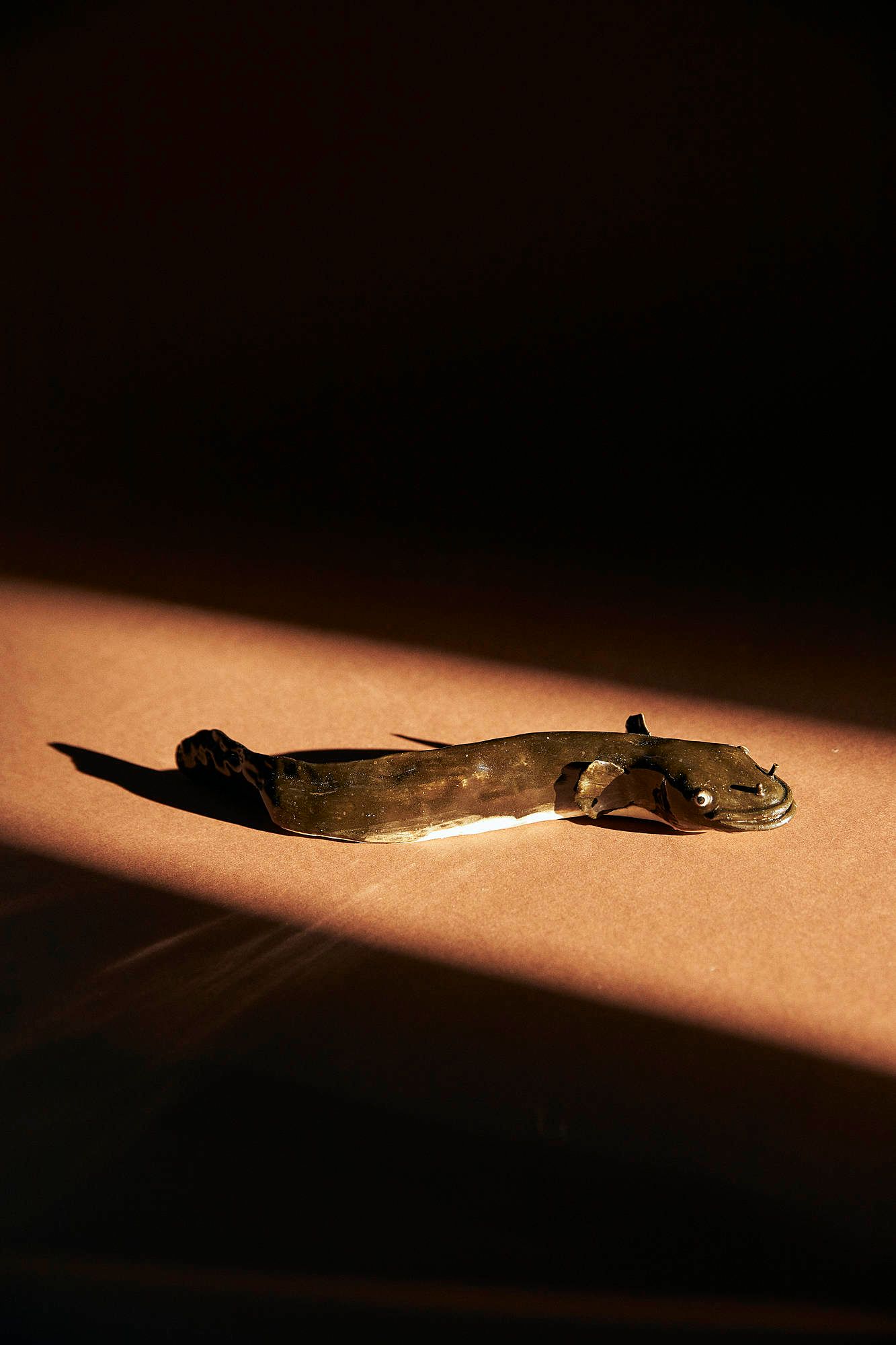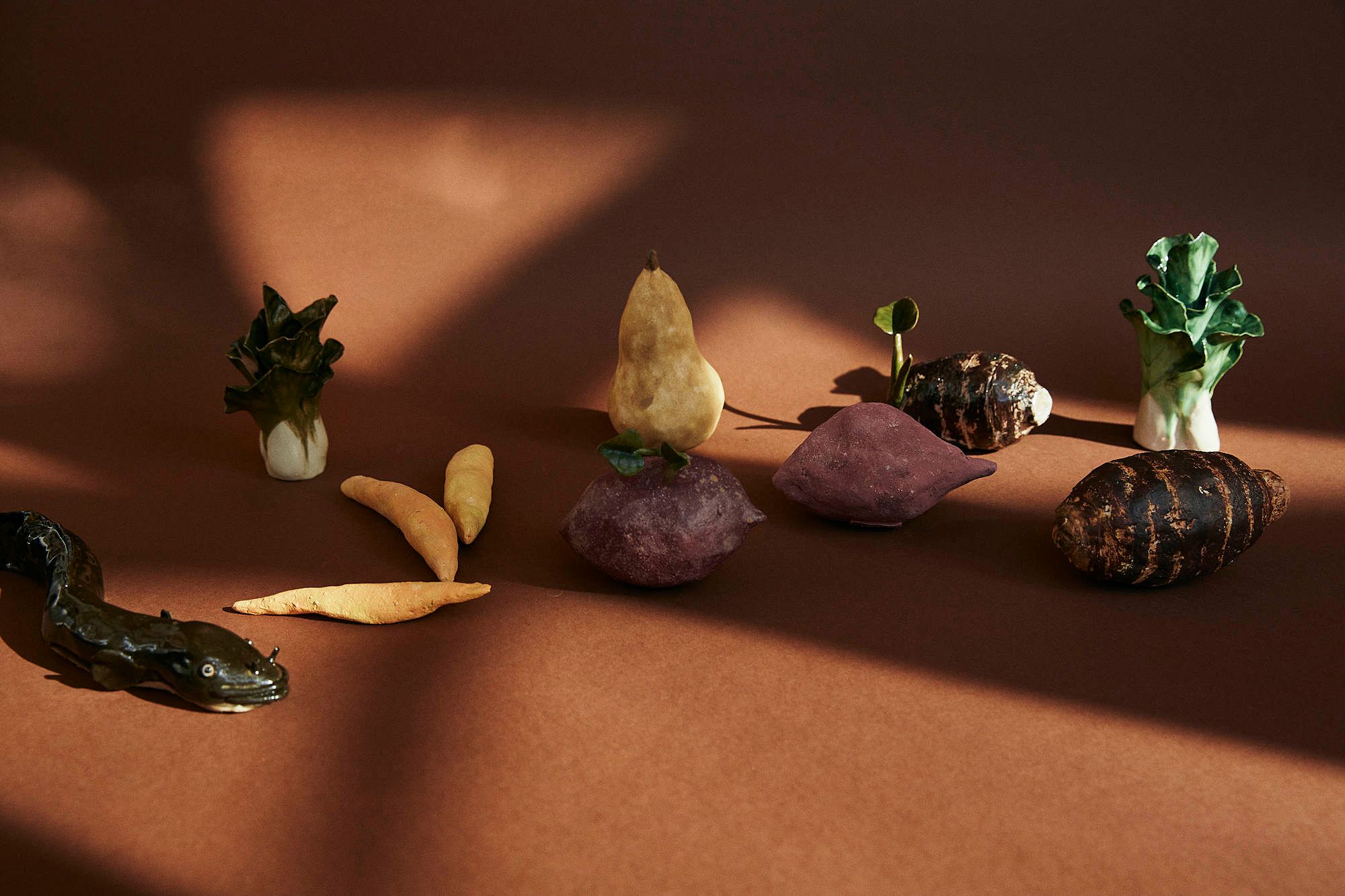The Mysterious Bad Boys of the Moana
Emiko Sheehan on tuna: as kaitiaki, as kai, as haututū bad boys, descended from the heavens.
Tangaroa ara rau
Tangaroa has many pathways
When we talk about being elusive, we talk about the way Tangaroa, God of the Sea, personifies tuna — (historically) common, everywhere, but a mystery. Even the best hī tuna with the tightest hīnaki will have tuna elude them. Tuna live long lives as shapeshifters. They’re slippery opportunists, finding homes in nearly any body of water. Land and gravity are no barrier. Being compared to and named Tangaroa must give tuna a big head — they ooze a confidence that freaks you (me) out of the water, like they are aware of their own ihi.
When the waters of Puna-kauariki in the heavens dried up, tuna and their other fish whānau descended to Te Ao Mārama, the world of light. Para (frostfish), ngōiro (conger eel) and tuere (blind eel) all went to the moana, but tuna stayed in the fresh water. Their descent from the heavens can be seen in the stars — in Tunaroa, a constellation used by Māori to navigate seasonal activities like when to catch tuna. Their divine whakapapa gives tuna big mana energy, and they are important to many iwi and hapū as kaitiaki, as an important food source and as a symbol of wisdom and cunning… but like some godly creatures do, tuna leaned into the haututū bad-boy act. The most famous pūrakau is of Tunaroa and Hina. Hina — sister of Māui — was bathing in the awa when Tunaroa saw her beauty and couldn’t cool his balls. Tunaroa seduced Hina and attacked her and Māui wasn’t happy. He cut up Tunaroa, throwing his brains to the water (which grew and became the edible roots of raupō), his head to the ocean (which became saltwater eels), and his body to fresh water (becoming freshwater eels).
Tuna live long lives as shapeshifters.
I like one Sāmoan version I heard of this pūrakau. It’s Sina who was bathing and attracted the attention of the giant tuna. When Sina left the waterhole, the horndog jumped out and followed her, like that ex who won’t stop sending you flowers with cards that just say beautiful and then turning up at your house, creepy stalker shit, but giant eel form. Sina wasn’t going to put up with that, she cut off the tuna’s head and buried it in her garden, and it grew into the coconut tree. In Tahiti they say it was the revenge of the tuna to come back as a coconut for everyone to kiss when they drink from it, the three holes on the coconut its eyes and mouth, but I like this Sāmoan edition because it leaves the agency with the Teine Sā. (It wouldn’t surprise me if the Māori version was originally closer to this, but Hina got rolled — like so many of our wāhine — by the bulldozer of colonisation, cue Māui, our colonial fathers’ favourite hero.)
I feel like I’ve had a Hina moment. I was in the stream at Piha, hapū as, washing salt from my body ~ wai tai with wai māori ~ feeling all picturesque in the afternoon sun, my big belly, big titties and long hair. Something muscular and slender caught my eye and suddenly a tuna was directly in front of me, staring up with deadpan haututū in his eyes. I leapt out of the water, screaming… then cackling at how dramatic I had just been. It was the fright of that freaky fish confidence, but what was I expecting in a stream where the tuna are protected?
It’s the mystery for me. It’s like tuna know something you don’t. You can see it in their eyes. Their edginess is magnetic. Growing up in the Waikato with a westie, big muffler, 9% Cody’s kind of background, I feel like I can relate to tuna on some mysterious bogan kaitiaki level. The westies’ spirit animal: they’re a little greasy, but it’s cool. Are tuna bogan? Are they just on another vibe that us non-gill breathers can’t resonate with? Whatever the answer, I respect their mystery.
I feel like I can relate to tuna on some mysterious bogan kaitiaki level.
Photo by Greta Van Der Star, ceramic art by Cindy Huang 黄馨贤 for 'Twin Cultivation'
Tuna have long stumped Western philosophers and scientists. The Age of Enlightenment had white boys popping off on their newfound ability to comprehend the big life questions, and by the 19th century, scientists had their answers for life and death and everything in between, except “Where do eels come from?” The ancient Egyptians believed eels came from the sun warming the Nile, Aristotle concluded they must be a secretion of mud and rain, and others believed they were born from seafoam, or grown from the hairs of horses tails that had fallen into the water. Freud dug around in hundreds, probably thousands, of eel bodies looking for their raho, only to be disappointed.
Modern science and commercial fishing have somewhat demystified the life cycle of tuna. Born at sea (the exact locations are still unclear), currents carry their metamorphous larvae bodies back to the land, to different directions determined by their different whakapapa. They reach the land as translucent glass eels and morph into cute brown elvers that travel up streams, riverbeds, waterfalls, grasses. Tangaroa ara rau. When they reach their freshwater destinations, they are the brown/grey/yellow tuna that we more easily recognise. They live like this from anywhere between 20 and 50 years, sometimes longer. On average, in Aotearoa, female tuna travel back to sea at around 34 years old, males at 23 — this journey can take many months, some prefer the scenic route. When they reach the ocean, this is when their sexual organs become visible (a little tip that could have saved Freud a lot of time). This is their final journey: somewhere in the moana, they give life and die. Asian eels go to the northwest-ish of the Pacific (apparently), South Pacific eels go to somewhere around Tonga (maybe). European and American eels (probably) go to the Sargasso Sea, which is where the greatest numbers of their eel larvae are found, but no one has ever seen an adult eel in the Sargasso Sea, no one has ever seen any adult eels spawn anywhere.
Tēnā te puna kei Hawaiki, te pū kei Hawaiki, te puna kei Rangiriri
The source is at Hawaiki, the origin is at Hawaiki, the source is at Rangiriri.
This whakataukī gives us an insight into where Māori believed tuna must go on their enigmatic migrations and it was used as a lure for catching tuna. The source of all fish is said to be Rangiriri at Hawaiki; speaking the sounds of the source was like a trance for tuna, beckoning them. This reflects a mentality based around pūrakau as points of origin and guides. Maybe tuna do return to Hawaiki, transcend back up through the stars, but getting caught up in definitive tangible answers is very occidental; I’ve never heard of any Māori digging through thousands of tuna bodies searching for answers (maumau kai), pūrakau and whakataukī were proof enough. It’s the separation of the spiritual and the physical, the insistence to categorise, that leaves Western science stale. This whakataukī might have no scientific standing, but it’s as close (maybe even closer) as modern science to answering the question, “Where do eels come from?” Te pū kei Hawaiki is my answer. But “How do we give back and respect the mana of tuna so they keep coming to our waters?” is a better question.
‘How do we give back and respect the mana of tuna so they keep coming to our waters?’ is a better question.
Tuna came to us as kaitiaki, as kai, as coconut. A once-abundant animal, it is now losing numbers drastically. The superstructures of capital progress that extract and destroy have made us individuals in our shared environment. Commercial fishing, pollution, blockage of waterways, and human arrogance have had a detrimental impact on the life cycle of tuna, and all the creatures that live in and use the waterways. Others have tried and failed to breed tuna in controlled environments, and scientists are trying to find the source of tuna so they can figure out how to pump up the falling numbers, but “Where do eels come from?” is not the point (and also disrupts their bad-boy mystique, which I think they’ve proven we can’t beat). We’ve lost the glory days of abundant resources, when there was balance between human consumption and the environment.
During the early years of European settlement, when Māori still had a measure of agency over the whenua, they would lease land to Chinese gardeners, who would grow their produce for a season and then move on. Exchange between communities would sometimes involve trading tuna for veggies. I wonder if the Chinese showed Māori how they prepared and ate tuna, and if their knowledge resonated with the lunar-driven seasonal activity of Māori. I wonder what else they shared with each other, two gardener cultures. A pocket in time and an age of economy that respected the limits of the whenua. If Māori were given what they were promised in Te Tiriti o Waitangi and He Whakaputanga, I believe we wouldn’t have problems with dwindling numbers of tuna. Karakia, waiata and pūrakau are evidence that pre-colonial Māori practised tikanga that understood the inter-connectivity among all organic life. Restoring this balance is how we respect the mana of tuna and hope they continue to return to our waters.
If Māori were given what they were promised in Te Tiriti o Waitangi and He Whakaputanga, I believe we wouldn’t have problems with dwindling numbers of tuna. Karakia, waiata and pūrakau are evidence that pre-colonial Māori practised tikanga that understood the inter-connectivity among all organic life. Restoring this balance is how we respect the mana of tuna and hope they continue to return to our waters.
He ua ki te pō, he tuna ki te ao
Rain at night, eels in the morning.
It’s raining as I’m writing this. I imagine tuna flowing, the muted clap of pebbles and stones underwater, slender bodies moving between shadows. It was raining the first time I touched a tuna. I didn’t catch it, but it got handed to me as it came out of the water, its strong body pulling away from my grip. We were in a stream on someone’s farm, between Ngāruawāhia and Whatawhata, and afterwards the tuna hung over the fire, flames licking their lifeless bodies. I licked my lips with thanks and wondered how many others had been in that same spot before me — before it was somebody’s farm — peeling dried slime from their hands as they waited for their meal. Often, when I’m driving home along the Hauraki Plains, I’ll catch myself in a glossy daydream, imagining when Māori still had kaitiakitanga over this whenua and what it used to look like, what it could have looked like now, before it was cleared and drained.
Swamps full of kahikatea,
and tuna, thriving.
Photo by Greta Van Der Star, ceramic art by Cindy Huang 黄馨贤 for 'Twin Cultivation'
This essay was originally commissioned and published as part of Twin Cultivation, an installation inviting you to harvest a ceramic vegetable for a stranger. twincultivation.co.nz
Panmure Train Station
Mon 27 — Sun 3 July
Britomart
Mon 4 — Sun 10 July
Hours
Mon to Fri: 8am—6pm
Sat to Sun: 10am—4pm



